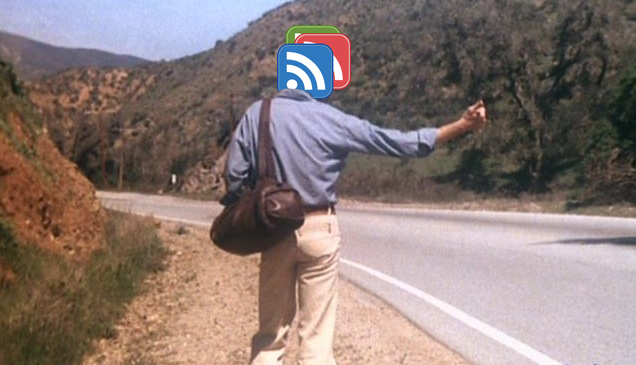Google Reader is dying come Monday, and the whole Internet is sad. I’m not sad. I won’t miss it at all.
I used to use Google Reader a lot, as in every day, and it was once a key component of my arsenal of work tools, too. Reader was the pulse of the Internet, my way of staying up to date with everything that happened while I was waking or sleeping. In tech news, having a resource like Google reader is important. Or wait no: was. Was important.
At one time, news happened at a pace that allowed it to be digested relatively slowly, in batches resembling what we were used to from the one or two-times a day print newspaper schedules. Google and RSS were fine for that; it’s like a digest that builds in near real-time, putting everything in one convenient place for you to come back to whenever you need to. Which is what some people still need it for, and that’s great.
But for me, and I’m sure for others like me who work in the online news space, at some point Google Reader just stopped feeling current enough, fast enough, and comprehensive enough. If Reader was the Model T, tools like Twitter and more timely and true real-time reporting tools that tell you when pages are updated the instant they’re updated became Edsel’s Model A.
Reader is still arguably a nice way to keep up with more evergreen and long-form content, from blogs that post irregularly and that you’d like to collect in one place. But for that, I again trust recommendations from my Twitter peeps, and add content to Instapaper or Pocket for later reading instead of looking to individual sources. This adds an additional filter layer for longer content, meaning I’m less likely to end up wasting my time reading something I’m not all that interested in. And recently, endeavours like The Magazine and Medium have made tracking that evergreen content even easier.
At first, I stopped using Reader for work around two years ago. I’d actually open it as an escape, tracking things that I was personally interested in but that weren’t really relevant to my specific coverage areas, per se, including gaming news. Tapping it open via Reeder on the iPad was a pre-bedtime activity, designed to provide some relaxing light reading before hitting the sack.
Then, eventually, I’d tap that icon less and less, finding fewer and fewer articles that I hadn’t already seen, or grasped the content of from Twitter posts and interactions. Finally, I moved it from my iOS dock to the standard homescreen, and by around a year ago it was relegated to a page towards the end of my series of iOS homescreens. I haven’t used it in months.
Reader was good stuff, and plenty of people still use it. But there are no shortage of alternatives, and by and large, the Internet has moved on. If people haven’t, it might be because Reader provided a comfortable standard that was easy, giving them little reason to look around. Reader’s death isn’t a bad thing; it’s just a chance to put your head up and look around to see what’s changed in aggregation over the course of the past few years.
